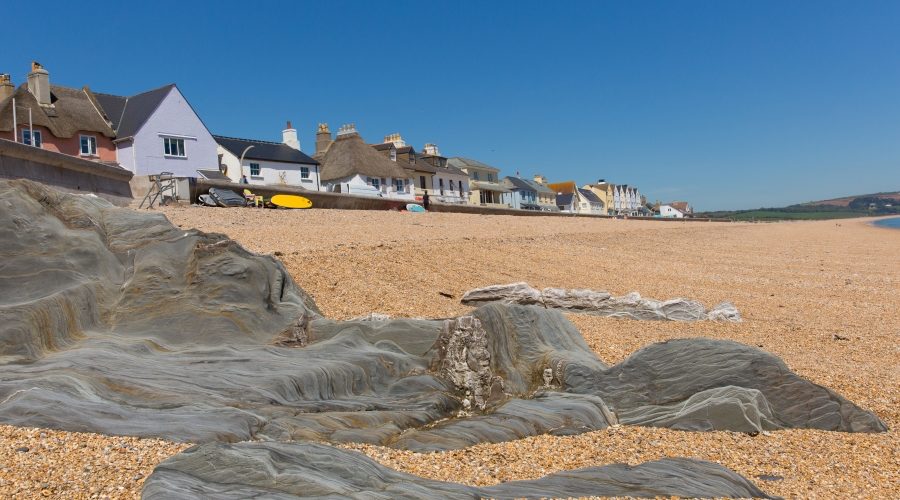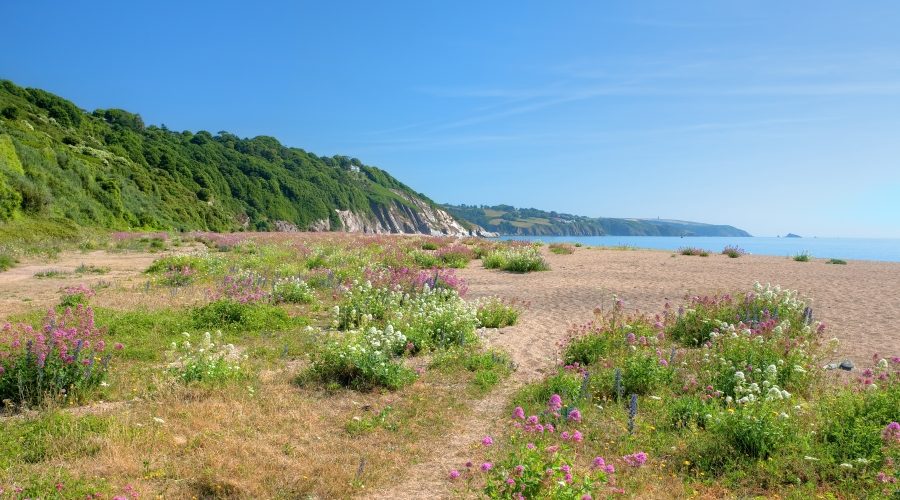Slapton Line Partnership Revised Strategy 2023
In 2023 the Slapton Line Partnership commenced a refresh of the October 2019 policy. This document incorporates the items agreed by the partnership on 3rd November 2023. A separate and more detailed health check of individual sections is also currently underway.
The policy still recommends that we have entered a phase of life of the A379 road along Slapton Line where further retreat should not take place and that an Adaptation Plan needs to be developed in consultation with the community, communicated and enacted. The revised policy does however acknowledge that the maintenance of coastal defences will still be required to maintain resilience of the road until a point when triggers (to be agreed) are met that require the road, or sections of the road, to be closed. The policy incorporates a number of additional studies that have taken place since 2019 to support this refresh.
Slapton Line Partnership Revised Strategy 2019
Over recent years a succession of significant and damaging storm events along the Slapton Line culminating in Storm Emma in March 2018 have appeared to accelerate coastal change beyond previously predicted, necessitating a reappraisal of the current management strategy.
As a result of the changes, the conclusion is that there is now minimal space available to retreat the road in a significant number of locations, which was the main approach to address coastal erosion in the previous strategy. Further engineering works to retreat the road would now be likely to have a short life and unlikely to attract funding. It would also potentially put the works required in direct conflict with the area’s environmental designations.
This document recommends that we are now entering a phase of life of the A379 road along Slapton Line where further retreat should not take place.

Vulnerability Assessment 2023
In 2023 a new Vulnerability Assessment was commissioned that built on previous assessments of the A379 Slapton Line Road undertaken by the University of Plymouth. This provided an up to date assessment of the vulnerability of the road to beach erosion during storms.
Summary of observations
- The majority of Slapton Line north of the engineered defences has a healthy buffer between the road and the upper beach of between 6 and 60 m, where the road would only become vulnerable during a 100-year erosion event or greater.
- The frontage at greatest risk from storm erosion is the area immediately fronting the Tank car park to approximately 450 m north of the car park, where the road would become vulnerable to storm erosion from a 10-year to 50-year return period erosion event.
- Around two-thirds of this frontage would become vulnerable during a 1-in-10-year erosion event, with buffer distances of only 3-6 m between the beach and the front of the road/coast path.
- This vulnerable section of frontage has some form of defence all the way along it, in the form of either a retaining wall, retaining wall capped with rock armour, or loose rock armour on the beach, but the quantity and quality of the loose rock armour varies along the beach.
- The loose rock armour volume is smallest (8-30 m3 of rock armour per 50 m of frontage estimated) at its northern extent, where the profiles are less vulnerable (100-year return period buffer or greater).
- The rock volume increases towards the south where the profiles are highly vulnerable (10-20-year return period buffer), with 60-106 m3 of rock armour per 50 m of frontage estimated.
- Around the centre of the loose rock armour frontage there are some vulnerable profiles (10-50-year return period buffer) with only 40-50 m3 of rock armour per 50 m of frontage estimated.
Vulnerability Assessment update 2021
Summary of observations
- Since storm Emma in 2018, coastal erosion has reduced the seaward buffer of land (natural road protection) by 750 mm
- 55 % of the frontage has a residual seaward buffer of less than the maximum erosion experienced during Storm Emma (10.6m)
- 10 m of the seaward land buffer has been lost between 2012 and 2021 along the most vulnerable sections of the road
Vulnerability Assessment 2018
This report demonstrates the vulnerability of the A379 road, along Slapton Sands Beach, to storm damage in the immediate future (post Storm Emma in 2018). The report presents cross-shore profiles along the entire length of the Slapton Line road to provide information on road vulnerability to storms impacts equivalent to that of Emma in 2018, and the space available to retreat the road if road damaging events were to happen again.
Storm Emma significantly reduced the distance between the Slapton Line road and the residual seaward buffer, which would otherwise provide natural protection for the road. The primary conclusions drawn are that there are multiple areas along the road that would be damaged if another storm Emma equivalent were to occur, and further locations where there is no space for landward retreat of the road.

The Economic Impact of the Slapton Line 2023
An Economics Study was undertaken by Hardisty Jones in 2023. The purpose of this study was to identify the wider economic impact of the Slapton Line now and in the future, taking into account of the views of local stakeholders. This will better inform further discussions about investment in the maintenance of the road, and may be used to support future funding bids.
Slapton Line Economic Valuation – 2016
This report presents findings that quantify the economic contribution of the Slapton Line road. In particular, two aspects of the road’s contribution are considered:
- the potential effects on local traffic – including that of residents and local service providers – if the road was lost either temporarily or permanently
- the potential effects of the temporary or permanent loss of the road to the local visitor economy

Beach Management Plan – non-technical summary 2018
The purpose of the Beach Management Plan 2018 to identify management activities that could be undertaken to reduce the flood and coastal erosion risk on Slapton Line and Torcross over the next 20 years, whilst recognising and managing associated environmental and amenity implications.
The Beach Management Plan provides information on
- Coastal processes which contribute to change in the area
- Performance of the existing coastal defences
- Economic benefit of future management options
- An appraisal of options against technical, economic, environmental, and social criteria
- A monitoring and intervention plan to sustain the A379 for the next 20 years
- Immediate and long‐term funding and policy scenarios
- Impacts of management options on environment designations
Beach Management Plan – main report
Appendix A – baseline scoping report
Appendix B – coastal processes baseline report
Appendix C – environmental baseline report
Appendix D – defences baseline report
Appendix E – economics baseline report
Appendix F – options appraisal report

Study of Barrier Failure – 2008
The research project explored the interaction between Start Bay and Slapton Ley in the event of a major breach of the barrier. The project had two primary aims
- identify the extent of seawater penetration within Slapton Leys in the event of a permanent breach of the shingle barrier
- identify measures to ensure the continuation of the freshwater natural features that would be lost in the event of a permanent breakdown of the shingle barrier

Slapton Coastal Zone Management – summary 2006
This study provided a comprehensive evaluation of the issues relating to coastal processes at Slapton Sands to establish a robust long-term coastal zone management strategy for the area in response to major erosion and road damaging events.
Slapton Coastal Zone Management – main report




